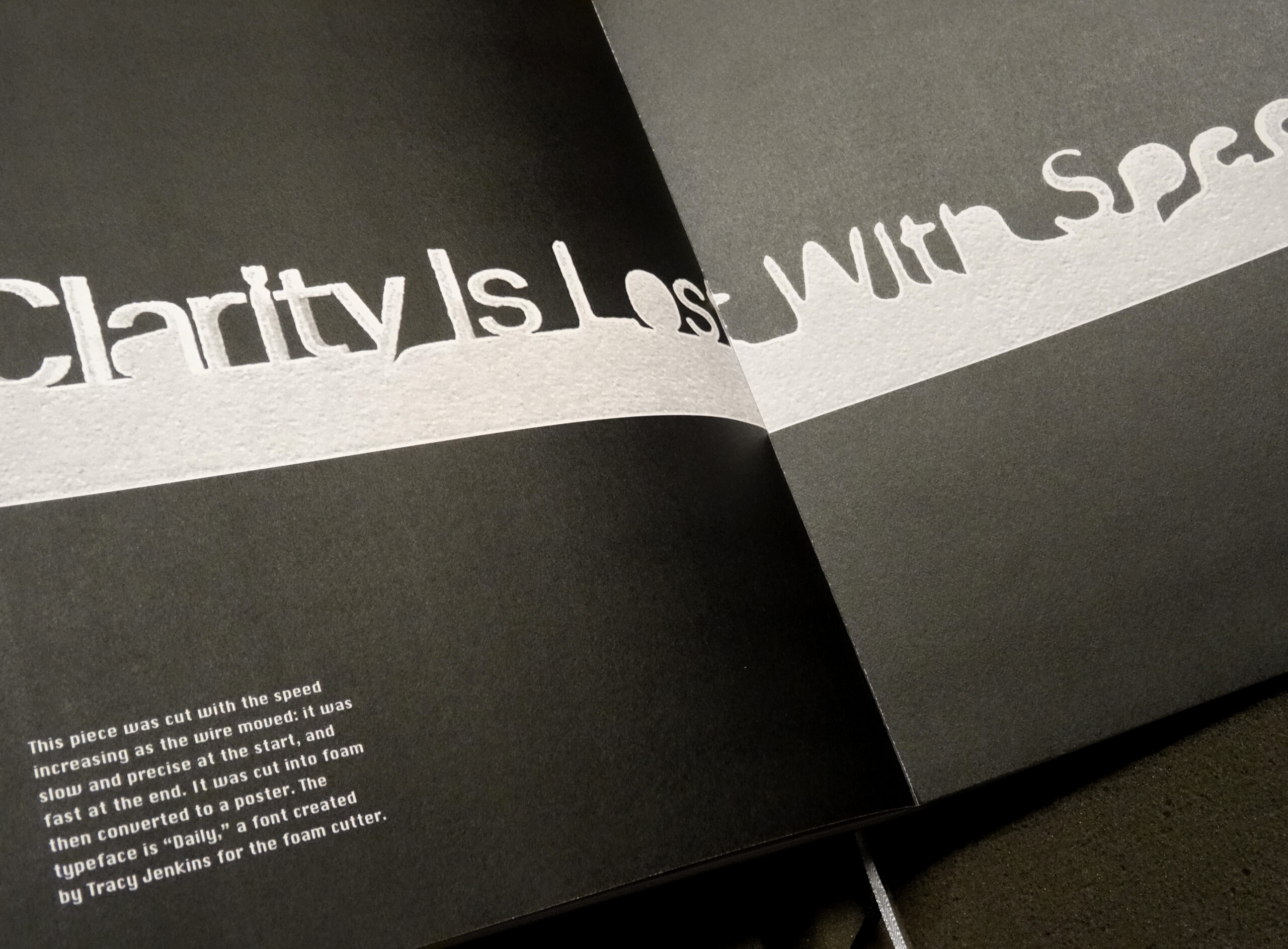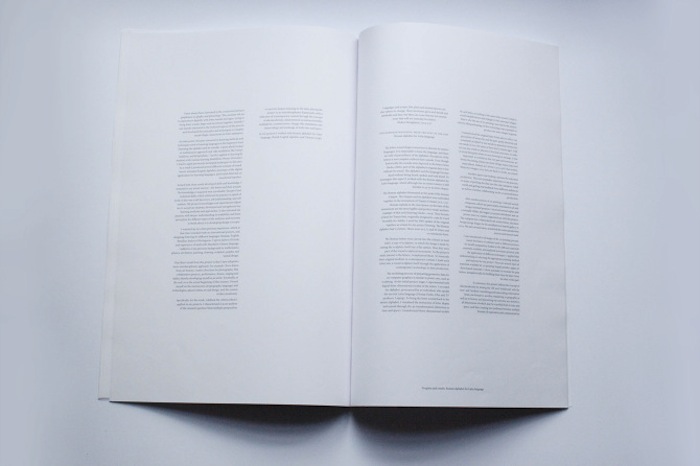
December 31, 2009
Thesis Book Story: Anna Nazo
See Jessica Helfand’s thesis here and Nancy Skolos’ here. Today, Anna Nazo’s 2014 thesis from Central Saint Martins.
++
My thesis project could be described as channeling interdisciplinarity through my passion for future trends and innovative technologies. It resulted in typographic work that functions as fine art. For me, the decision to make a book came naturally in the working progress, as it felt that producing two books (the thesis book and a font catalog) would be the most appropriate way of showing the work. The books were a part of my degree show’s exhibit, together with an actual sculptural installation.
As a result of the work, I was selected to be a speaker at the 2014 Electronic Visualisation + the Arts Research Workshop at the British Computer Society, in London. Another outcome of the project was a digital sculpture, The Garden EPLVLEREPRAETERITORVM (From the Dust of the Past)
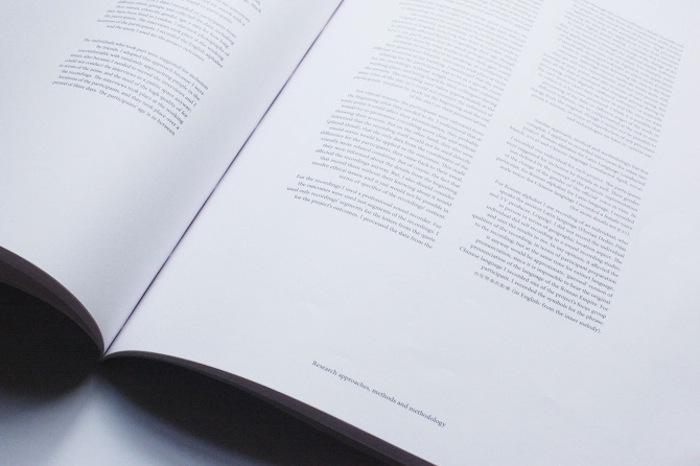
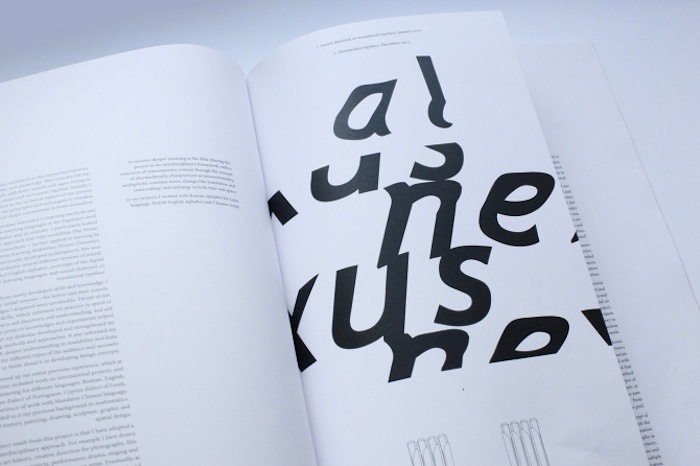
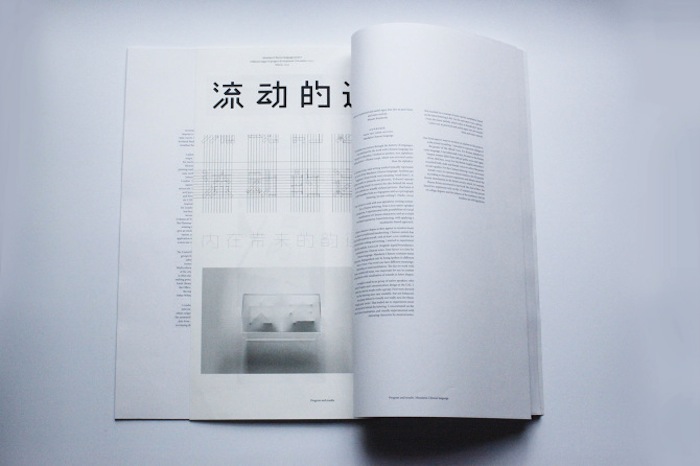
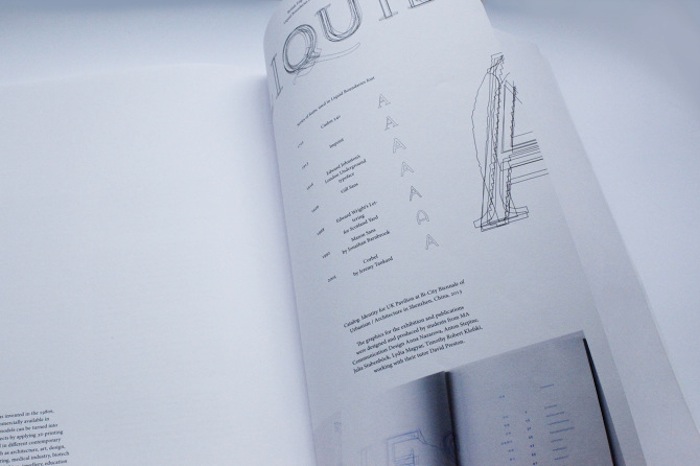
Observed
View all
Observed
By Anna Nazo
Recent Posts
Courtney L. McCluney, PhD|Essays
Rest as reparations: reimagining how we invest in Black women entrepreneurs Food branding without borders: chai, culture, and the politics of packaging Why scaling back on equity is more than risky — it’s economically irresponsible Beauty queenpin: ‘Deli Boys’ makeup head Nesrin Ismail on cosmetics as masks and mirrors


